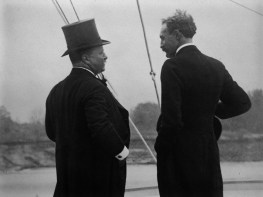Not surprisingly, FS budgets are down, and there are impacts, including to recreation.
Here’s one from the White River. On a scale of 1 to 10, this is probably an 8 in terms of information..
This is from the Aspen Times here. I think it would be interesting to have this much information on each forest.
As funding stands now, the White River will lose “somewhere in the neighborhood of $3 million” in funding compared with last year, Fitzwilliams said. The funding for 19 national forests is decided by the Rocky Mountain Region headquarters in Lakewood.
Some decisions still are being made in the regional office that could affect the White River’s final budget for 2013, Fitzwilliams said. For example, some of the funds budgeted for the forests in the region weren’t spent in 2012, so there is a chance some of that will carry over to the 2013 budget. In addition, national forests across the country took funds out of programs to contribute to fire-fighting efforts last summer. Some of those funds also may be replaced.
The White River National Forest’s budget varies drastically from year to year. It had a $28.57 million total budget in 2010 with a huge caveat. About $10.6 million of that, 37 percent, was allocated specifically for projects to deal with bark-beetle destruction. Last year’s budget was about $22 million, Fitzwilliams said.
this is not counting sequestration, and
The major portion of the funds raised at the Maroon Bells will remain intact. The funds there are collected and spent under a program separate from the general operating budget.
“That’s fee money and that’s pretty sacred,” Fitzwilliams said.
Congress passed legislation that allows the Forest Service to charge a fee at areas that meet certain criteria. Those funds must be spent in the area where they are collected.
The Forest Service has collected between $100,000 and $200,000 each summer from visitors to the Maroon Bells Recreation Area since the fee was started in 2000. The agency charges $10 per vehicle and 50 cents on each bus ticket. Travel for personal vehicles is limited, so the buses take tens of thousands of visitors to the popular Maroon Lake. Fitzwilliams called the fee a “lifesaver” in a 2011 interview.
This story is at the other end of the budget in terms of what campgrounds are closed and the impacts to the environment (people aren’t going to stop “using the facilities” just because there are no facilities..and to other recreation-providing entities.
Here’s the link and below is an excerpt:
Pecos business operators are livid that the U.S. Forest Service has closed a campground, locked day-use toilets and taken away trash cans from popular recreation sites in the Pecos Canyon.
A Santa Fe National Forest spokesman says the problem is lack of funds to maintain the recreation sites.
The impact on the Pecos sites may be only the beginning. According to an initial fiscal year 2013 budget memo for the Santa Fe National Forest, recreational funding is trending down. The agency’s recreational budget was cut by about 8 percent — $166,000 — from the 2012 budget. “Without adequate funding to support program areas, the forest must set priorities as to which sites will open, and conversely which will remain closed,” the memo states.
Pecos residents say the agency shouldn’t make the Pecos Canyon low priority on the recreation funding list.
The Pecos Business Association and the Upper Pecos Watershed Association sent a letter Monday to New Mexico’s Congressional and state lawmakers and Gov. Susana Martinez about the closed recreation sites. The letter says their members met in mid-March with Pecos/Las Vegas District Ranger Steve Romero, who told them funds in the recreation budget were “insufficient to maintain services at existing recreation areas and that ‘potential’ closure of eight day-use areas, four campgrounds and one trailhead is planned for the new fiscal year.”
But the toilets already are locked and trash cans are gone from free day-use areas at Upper and Lower Dalton, Windy Bridge, Cowles Ponds and the Winsor trailhead, according to Huie Ley, owner of the Tererro General Store in the canyon. The Cowles and Links Tract campgrounds also are closed.
Finally, our friends in Southern California think “if there’s no budget, give it to the Park Service!” as we’ve discussed before..
Hmm.. if it works for the Angeles, why not the San Bernardino? Here..
NATIONAL FORESTS: Park Service offers a hand in the Angeles
Federal officials are proposing that the National Park Service help the U.S. Forest Service manage the very busy Angeles National Forest, which encompasses most of the San Gabriel Mountains stretching from the Cajon Pass to Los Angeles.
“Under the proposal, the region essentially would remain national forest land managed by the cash-strapped Forest Service. But it would draw upon the National Park Service for additional law enforcement, signage, trail maintenance and services such as trash pickup,” according to a story in the Los Angeles Times by Louis Sahagun.
Interestingly, Sahagun’s story said that more than 95 percent of public comments on the plan supported the idea of creating a National Recreation Area spanning the entire area, including the national forest land.
The San Bernardino National Forest suffers many of the same pressures as the Angeles, from vandalism and other crime to air pollution to illegal shooting and off-roading. Would the National Park Service be able to solve those problems? It will be interesting to watch what happens in our neighboring forest
Well potentially the FS and Park Service could work together to share resources in this tough budget climate but some think.. story here.
The only way the two federal agencies can work together in the Angeles is through an obscure program called Service First Authority. The NPS said this is one way to move some NPS park rangers into the heavily used Angeles Forest areas such as the East and West Fork of the San Gabriel River.
But Chu criticized this management proposal. “That is an unknown,” she said. “I don’t know if that has ever been used on a project of this scale. Visitors need – and deserve – additional resources in the San Gabriel Mountains and Watershed, and I intend to do my part to ensure that happens. ”
She will be hosting townhall meetings to allow the public to ask questions of the NPS, as well as roundtables with stakeholder groups, she said. No dates have been set for the additional meetings.
It doesn’t seem like an “obscure authority” to me, having seen it work with BLM extremely well in southern Colorado. I wonder if that is the journalist’s opinion, or the representative’s opinion. I don’t blame any representatives for doing their best to bring bucks to their forest, but discounting Service First out of hand does not seem fair either.
It makes sense for agencies to work together.. I am especially reminded since yesterday was tax day. If I were the new Interior Secretary, I would reinvigorate Service First in a serious way with the Forest Service, because giving pieces to the Park Service so they get more bucks depending on political clout doesn’t seem like good public administration.
Of course, if I were the Secretary I would ask them to stop doing studies and figure something out that minimized the need for political intervention and take the study money and give it to Mesa Verde for some decent fencing.


